Abstract
To evaluate the repeatability of a questionnaire designed to assess change in respiratory symptoms 90 smokers were interviewed on two occasions. The questionnaire included questions from the Medical Research Council questionnaire on respiratory symptoms, questions on acute chest illness and cough and phlegm production in the preceding two weeks, a modification of Field's card system for estimating frequency of cough, and an objective assessment of the presence of phlegm--the loose cough sign. The study was carried out in two parts. During the first part 30 male smokers were interviewed by one observer and then re-interviewed 1 to 2 hours later by a different observer. During the second part 60 subjects were interviewed and then after a period of 1 to 10 days re-interviewed by the same observer. The results showed that the within-subject variation representing the measurement error for Field's card system was 15.1% of the between-subject variation and was adequately Normal to justify the use of standard analytical techniques. Similar results were obtained from questions on cough and phlegm scored between 1 and 5, although the variation in this case was rather less Normal. In general, the between-observer, within-observer, and within-subject repeatability were satisfactory for all parts of the questionnaire with the exception of the loose cough sign which had a relatively low prevalence. There was no evidence of an observer order effect and there were no important systematic differences due to lapses in time or different observers.The findings indicate that the techniques such as the cough scoring system may be used to permit studies of respiratory symptoms via questionnaire methods to be much smaller than those required to detect equivalent differences in prevalences.
Full text
PDF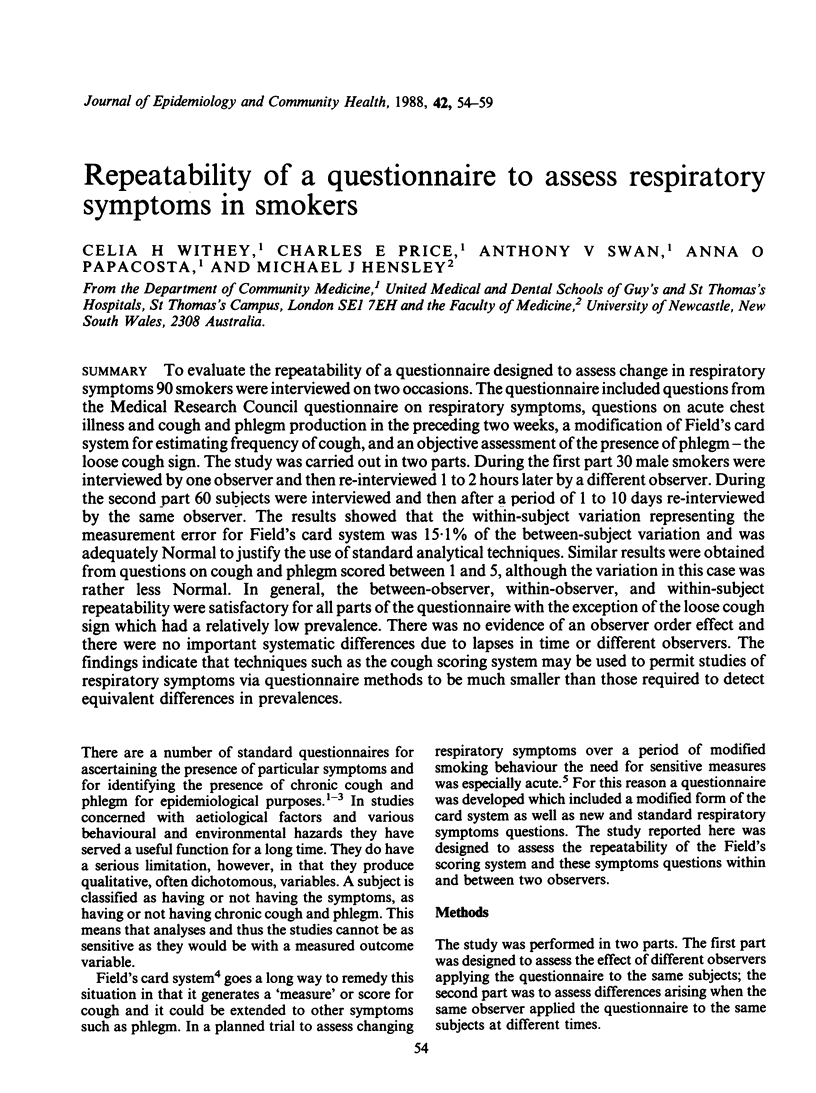
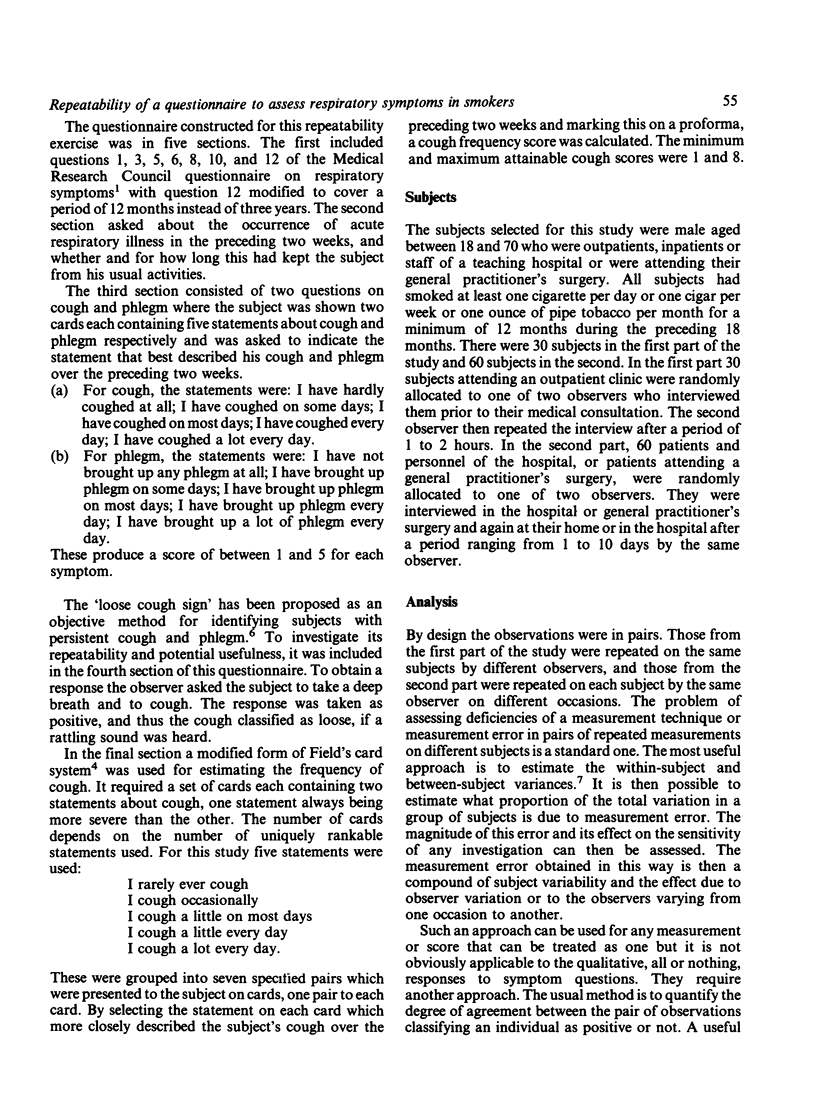
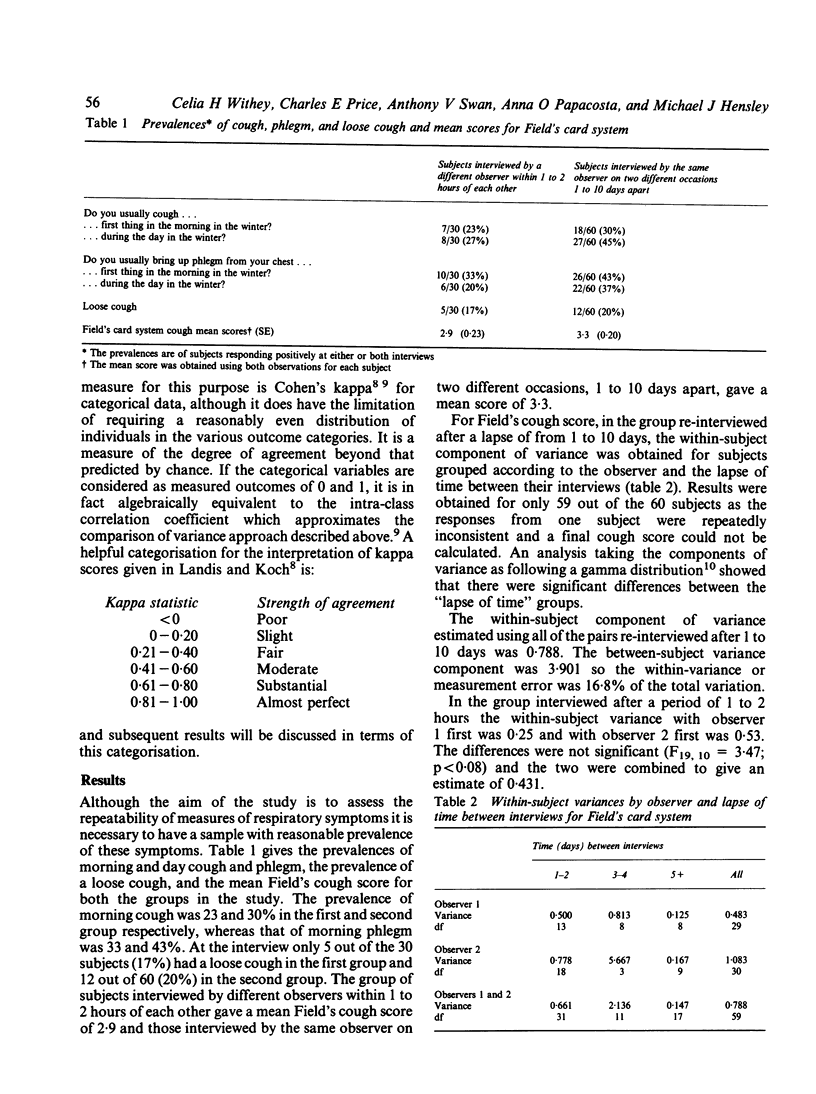
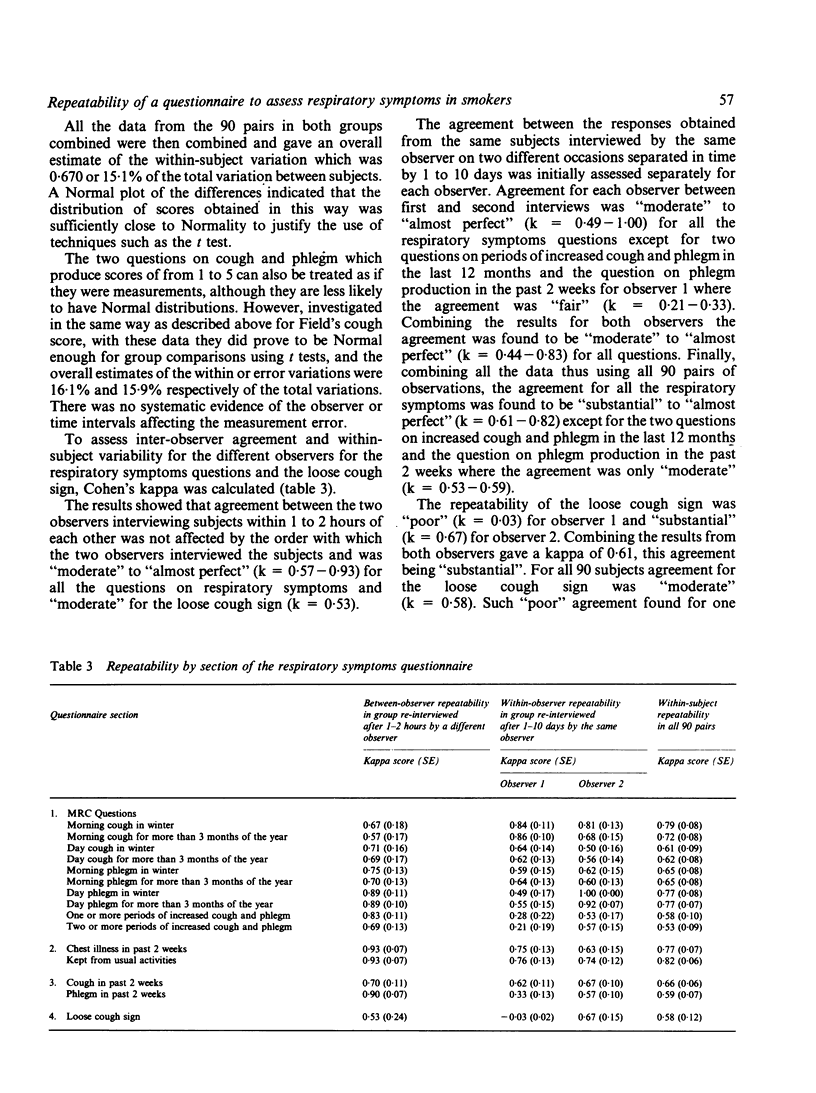
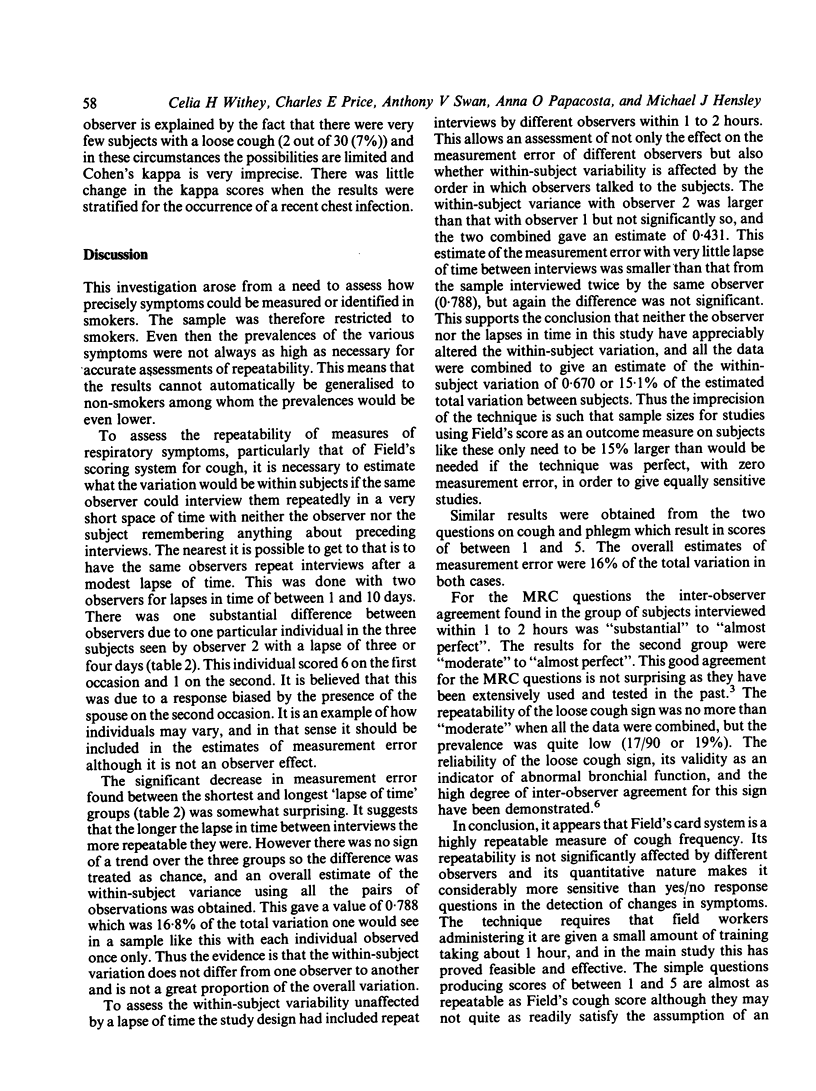
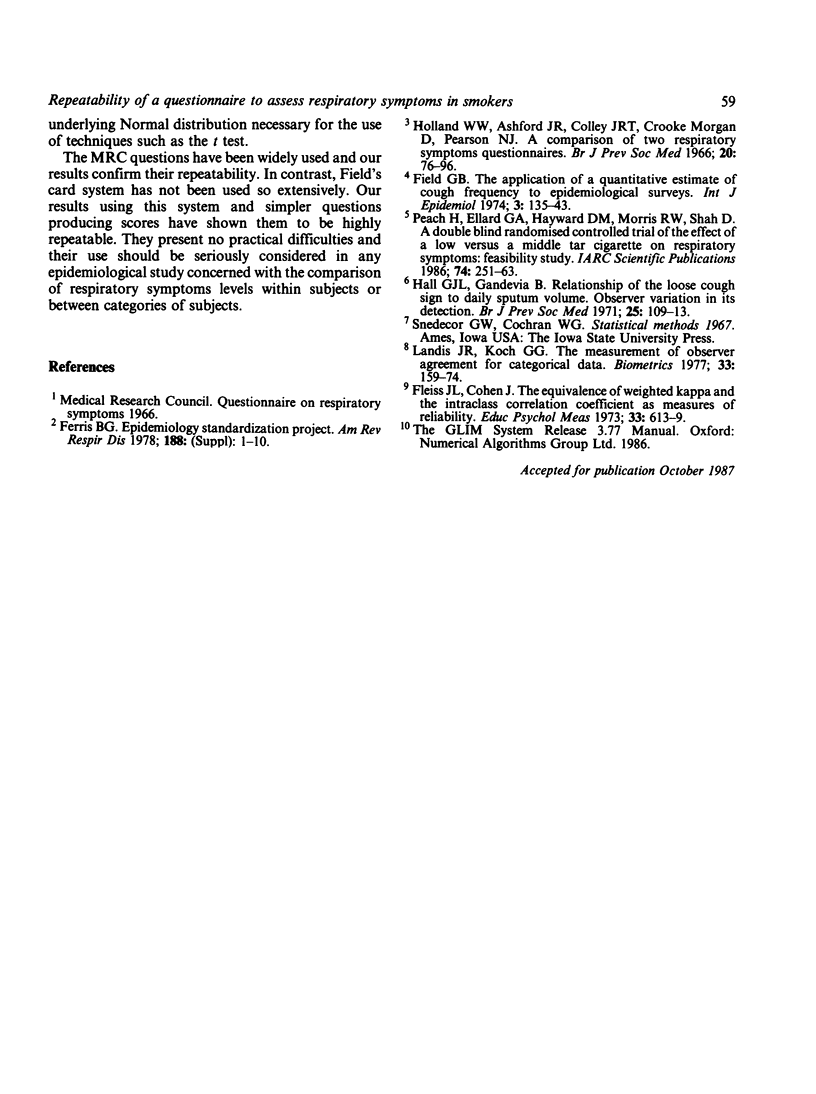
Selected References
These references are in PubMed. This may not be the complete list of references from this article.
- Field G. B. The application of a quantitative estimate of cough frequency to epidemiological surveys. Int J Epidemiol. 1974 Jun;3(2):135–143. doi: 10.1093/ije/3.2.135. [DOI] [PubMed] [Google Scholar]
- Hall G. J., Gandevia B. Relationship of the loose cough sign to daily sputum volume. Observer variation in its detection. Br J Prev Soc Med. 1971 May;25(2):109–113. doi: 10.1136/jech.25.2.109. [DOI] [PMC free article] [PubMed] [Google Scholar]
- Holland W. W., Ashford J. R., Colley J. R., Morgan D. C., Pearson N. J. A comparison of two respiratory symptoms questionnaires. Br J Prev Soc Med. 1966 Apr;20(2):76–96. doi: 10.1136/jech.20.2.76. [DOI] [PMC free article] [PubMed] [Google Scholar]
- Landis J. R., Koch G. G. The measurement of observer agreement for categorical data. Biometrics. 1977 Mar;33(1):159–174. [PubMed] [Google Scholar]
- Peach H., Hayward D. M., Shah D., Ellard G. A. A double-blind randomized controlled trial of the effect of a low- versus a middle-tar cigarette on respiratory symptoms--a feasibility study. IARC Sci Publ. 1986;(74):251–263. [PubMed] [Google Scholar]


